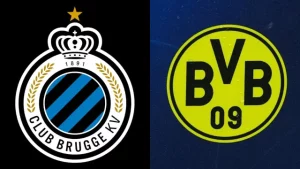
How Nick Saban’s legendary 2015 Alabama coaching staff changed the game
WHEN DAN LANNING walks out onto the field at Mercedes-Benz Stadium, where his Oregon Ducks will face Kirby Smart’s Georgia Bulldogs on Saturday, it’ll be hard to forget from where he came: a $1,200-a-month job under Nick Saban just seven years ago.
Lanning remembers the eyebrows that were raised when he gave up a titled coaching role at then-FCS Sam Houston State for that graduate assistant job at Alabama in 2015. But the opportunity to sit next to Saban was too great to pass up, breaking down defensive pressures, helping coach outside linebackers, running the scout team and breaking down game film as part of one of the most legendary coaching staffs of all time.
Six of Saban’s 2015 assistants are current Power 5 head coaches, making nearly $50 million combined in 2022. The defensive and offensive coordinators from that staff, Smart and Lane Kiffin, are guiding No. 3 Georgia and No. 21 Ole Miss, respectively. Secondary coach Mel Tucker is now one of the highest paid men in the sport at No. 15 Michigan State. Offensive line coach Mario Cristobal now leads No. 16 Miami. And after 40 wins in four seasons at Louisiana, wide receivers coach Billy Napier is tasked with leading a rebuild at Florida.
Lanning, who takes over for Cristobal at No. 11 Oregon this season, was part of a stable of entry-level employees on that 2015 Alabama team who’ve gone on to make an impact on the game, even if they don’t yet run their own programs: Doug Belk, an acclaimed defensive coordinator at Houston, and Maryland safeties coach Wes Neighbors, among them.
“It forever changed college football,” Lanning says now of Saban’s approach to staff building. “It’s the education to coaches. He’s made this profession real special for coaches, where you’ve created opportunities. These analyst roles that have been created or graduate-assistant roles that he’s helped created for people. It’s going to get your doctorate as a young coach. Maybe even also as an older coach, you get a chance to go learn a new way to skin a cat.
“I think he’s done a good job of bringing people on board, giving them his philosophy and then people taking that and running it and adapting to their personality.”
For all the reverence, it shouldn’t be lost on anyone that Saban’s 2015 assistants — who have won nearly 65% of their games as head coaches — now are his biggest threats.
Lanning is now helming a ranked team. Smart, who declined an interview for this story, in July signed a 10-year, $112.5 million extension that made him the highest-paid coach in the sport — until Saban passed him a month later. Napier, who was coaching in the Sun Belt last season (and winning coach of the year for the second time), is now guiding an SEC foe, with SEC money. One of his first orders of business? Adding numerous positions to form a Saban-like staff.
Sure, there is some precedent here: Hayden Fry’s staff at Iowa in the 1980s, Jimmy Johnson’s at Miami in the late 80s and Dennis Erickson’s at the same school a few years later. They produced several head coaches with varying degrees of success.
The difference at Alabama? The success of Saban’s staffs has been over a period of nearly two decades, in many cases replacing a coach who has gotten a head job with another who will in a few years.
“One thing about it is: seeing successful people come before you,” says Shaun Dion Hamilton, a linebacker who played in every game in 2015 as a sophomore.
“And from a coaching standpoint, every coach comes to Alabama [wanting to] see what this position coach did that helped put a running back or a linebacker in the first round. It’s just everybody feeding off one another.”
Cristobal calls that 2015 staff a “think tank” that forced him to bring his “A game.” But the Alabama way, the Saban way, is to never get comfortable. And in 2015, that helped hone a legendary lineup of coaching talent.





